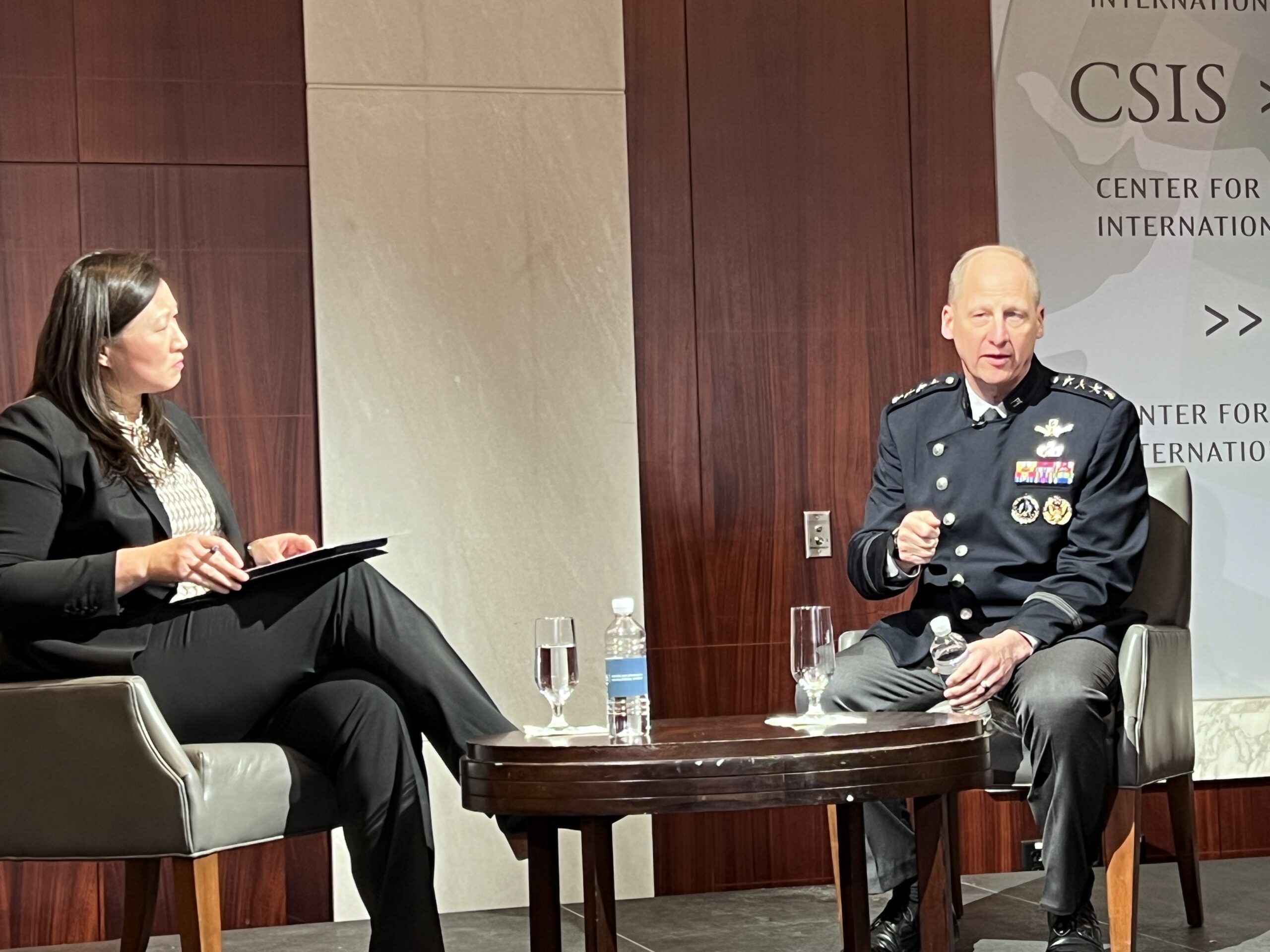Products You May Like
WASHINGTON — The U.S. Space Force last year launched a small satellite on a Firefly rocket in a demonstration of responsive launch, sending the payload to orbit just 27 hours after receiving launch orders.
That mission, named Victus Nox, was impressive, Gen. Michael Guetlein, vice chief of space operations of the U.S. Space Force, said Jan. 19. But he cautioned that responsive space should be about more than setting speed records.
If a U.S. satellite gets taken out by an adversary, the default response cannot just be to speedily launch a replacement, Guetlein said at the Center for Strategic and International Studies. He argued that the Space Force needs to think more unconventionally about backup solutions.
The Space Force, for example, could pursue agreements with allies around the world to use their space assets, leverage commercial satellite providers or explore other alternatives to assure capability, he said. Being responsive means fundamentally changing how the Space Force approaches problems and how “guardians should think about tactically relevant timelines.”
“It’s not just about building hardware,” he said.
More Victus Nox-style missions are being planned in the coming years, including one co-sponsored by the Pentagon’s Defense Innovation Unit. But Guetlein insisted that the idea of responsive space is to consider all options to meet the mission. “We need to broaden our thought process,” he said.

Guetlein noted that missions like Victus Nox also help to re-evaluate bureaucratic business processes and internal workflows within the Space Force. And they provide opportunities to learn how to use critical thinking, sometimes over established protocol.
Jason Kim, chief executive officer of Millennium Space Systems, said he witnessed some novel ways of doing business during the planning for Victus Nox. Millennium Space, a spacecraft manufacturer owned by Boeing, supplied the satellite for the Victus Nox mission.
“What I observed during mission operations was guardians using critical thought, as opposed to using checklists all the time,” Kim said at CSIS during a panel discussion.
Kim said he saw a “warrior mindset” applied to responsive space. With much shortened timelines, it may not be realistic to check off every item on the traditional checklist, he added. The attitude was more along the lines that “we’ve done that analysis, we need to make this decision really quickly, we have the recommended plan, let’s go execute.”
What this means for the launch sector
The Space Force’s evolving view of responsive space does not necessarily translate into a booming new business for rocket companies.
Brett Alexander, chief revenue officer of Firefly Aerospace, said the company believes the success of Victus Nox could lead to commercial opportunities to provide rapid-response launches.
“There are other commercial customers now that do want that responsiveness,” Alexander said at the CSIS panel discussion.
The success of the Victus Nox mission last September, he said, “has allowed us to diversify our offering to the private sector, to the benefit of our business as well.”
However, even if the military continues to perform occasional demonstrations like Victus Nox as test cases, for launch providers, responsive launch is unlikely to be more than a niche amidst the larger small satellite launch market.
Given the limited commercial demand for these types of missions, military demonstrations are not enough to sustain multiple companies hoping to specialize in dedicated small satellite launches.
A cautionary tale is the now-defunct launch startup Virgin Orbit, which had actively lobbied the Defense Department to fund more rapid-response launch contests. Its executives thought winning these could lead to stable revenue streams.
“Virgin orbit was in business for responsive launch,” Kurt Eberly, director of space launch at Northrop Grumman, said at the panel. But the market fundamentals still do not support many companies pursuing these specialized services full-time, he added.
“They were hoping to see more of a commercial demand signal … but it didn’t happen,” Eberly noted.
Many commercial customers launching small satellites would rather wait months to hitch a discounted ride on a SpaceX rocket than pay a premium for a dedicated launch on shorter notice, Eberly said. To these customers, it’s worth waiting to get on a Transporter rideshare “because the price is right.”
From demos to operations
Alexander said the Space Force has yet to develop an “acquisition strategy” for responsive launch. “I think the challenge for the Space Force now is to move from demos to operations.”
One approach could be to work with commercial rocket companies and satellite manufacturers so the military could access existing production lines — and suppliers would not have to build hardware specifically for responsive launch missions. “If we’re launching 12 times a year, instead of building a rocket for the tactically responsive space mission that sits around and waits, you take the rocket that’s already coming off the production line,” Alexander said.
The same could be done with the spacecraft, and suppliers would have to agree to allow DoD to preempt a commercial customer if there is a pressing national security mission, Alexander added. “Acquisition strategy is a boring term but it’s the coin of the realm.”
